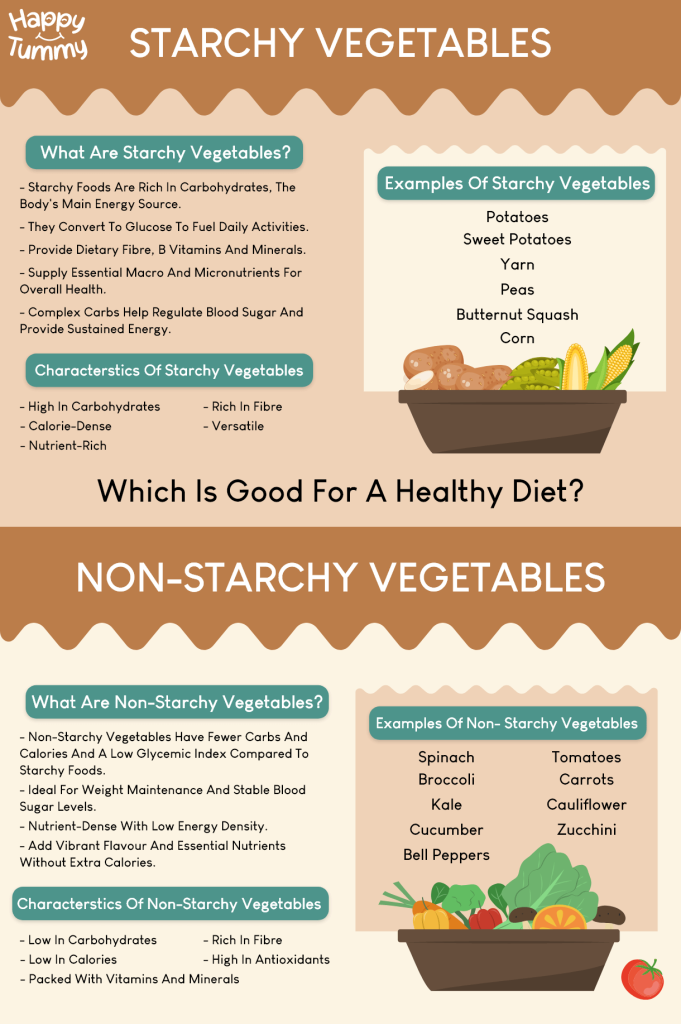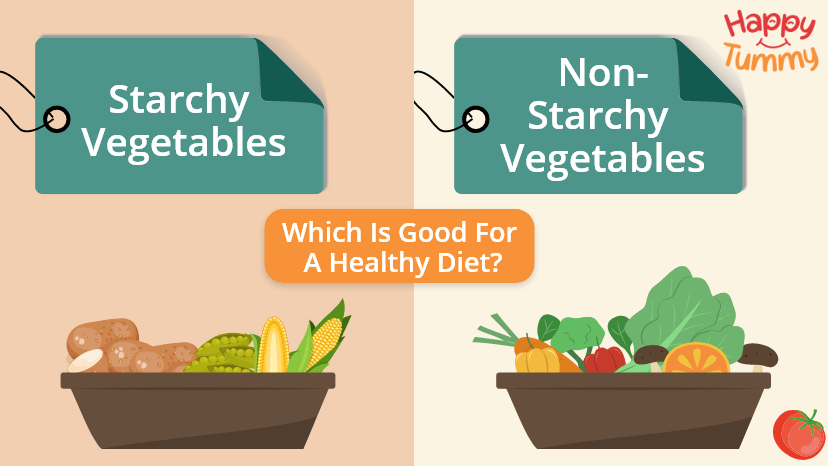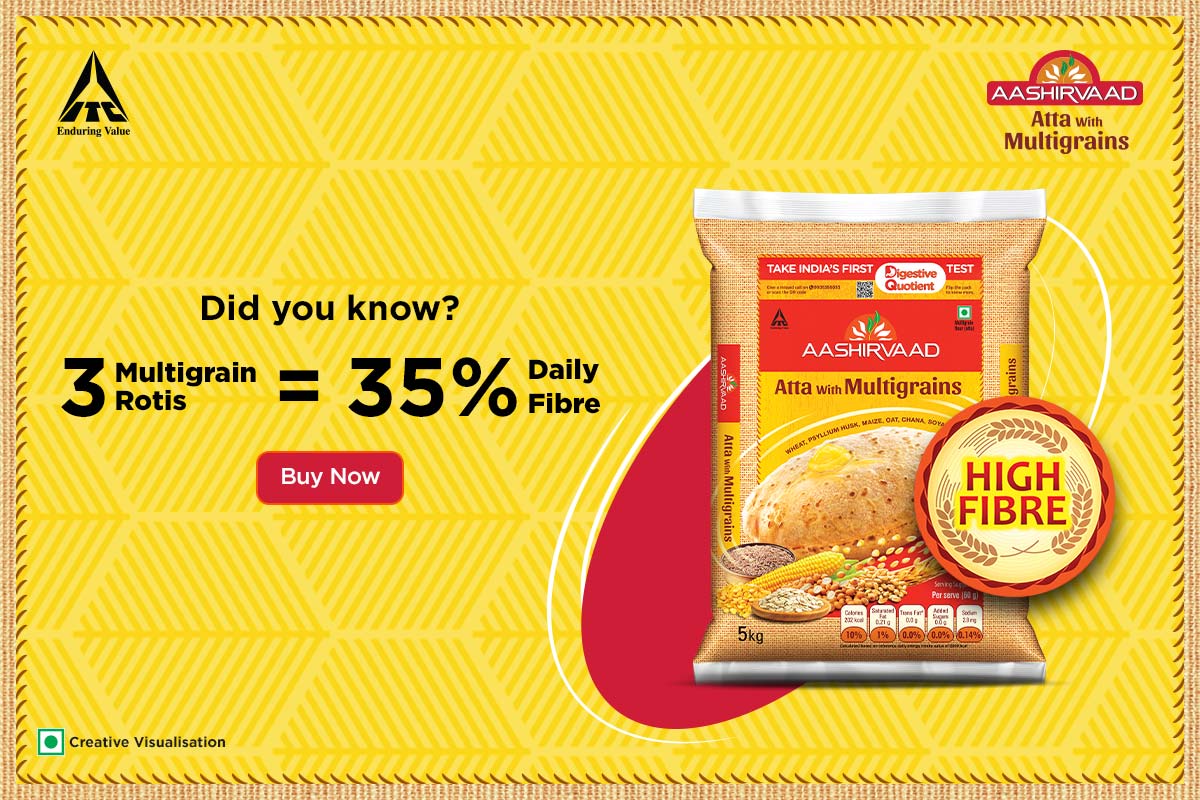Table of Contents
Vegetables are crucial to our diets as they are a source various essential nutrients. Starchy and non-starchy are some classifications commonly used to categorise vegetables based on the amount of carbohydrates they contain.
Both types of vegetables are rich in vitamins, minerals, and fibre. Still, they are utilised differently in a diet, especially for energy, weight management, and blood glucose regulation. Potatoes, corn, and peas fall under starchy vegetables, which are very high in carbohydrates and provide substantial energy for individuals, making these starchy foods essential meals.
Alternatively, non-starchy vegetables like leafy greens, broccoli, and bell peppers have fewer calories and carbohydrates but an abundance of antioxidants, fibre, and other vital micronutrients. Knowing the starchy and non-starchy vegetables enables an individual to make healthy choices about the diet they wish to have or even the diet they want to work towards.
In this blog, we will discuss the distinctive benefits offered by each vegetable and suggest ways of including them in a balanced diet.

What Are Starchy Vegetables?
Starchy foods are rich in carbohydrates, the body’s primary energy source. Starches are converted into glucose, which the body uses as fuel for everyday physical activities.[1] Besides carbohydrates, starchy foods are good sources of dietary fibre, B vitamins, and other valuable minerals.[2]
One should include starchy foods in their diet to improve their overall health as they provide essential macro & micro nutrients, energy to assist the physical and physiological functioning of the body. They provide required energy and assist in the body’s functions. Complex carbohydrates are the best to consume since they provide nutrients and help regulate blood sugar.[3]
Examples of Starchy Vegetables:
- Potatoes
- Corn
- Sweet potatoes
- Peas
- Butternut squash
- Yam
Characteristics of Starchy Vegetables:
- High in Carbohydrates: Starchy vegetables chiefly comprise starch, a complex carbohydrate that supplies a long-lasting energy source. Thus, it is an excellent fuel reserve for the body, especially during physical activities or for people needing sustained energy throughout the day.[4]
- Calorie-Dense: Non-starchy vegetables have fewer calories than starchy vegetables because they contain fewer carbohydrates. This addition is vital for many diets, but portion control is significant for calorie-controlled diets.
- Rich in Fibre: Starches contain soluble fibre that assists digestion, aids in bowel movement, increases satiety, and makes one feel full. Fibre also has other health benefits in that it helps to regulate cholesterol and blood sugar, which is good for the heart. [5]
- Nutrient-Rich: Besides carbohydrates, starchy vegetables are rich in potassium, vitamin C, and some B vitamins. These nutrients enhance immunity, muscular tissues, and energy.[6]
- Versatile: They can be boiled, baked, roasted, or mashed. They are usually served alongside main dishes, stews, or soups, and are often used in casserole preparations, where ingredients are baked together in one dish.
What Are Non-Starchy Vegetables?
Non-starchy vegetables contain fewer carbohydrates and calories and have a low glycemic index compared to starchy vegetables and foods. This makes them ideal for a weight maintenance plan, as they support healthy eating without restriction while helping to maintain stable blood sugar levels.[7] ,
These vegetables contain adequate low-glycemic index vitamins, minerals, and fibre, but few energy-yielding carbohydrates, making them suitable for nutritional quality and energy density.
Low-carb vegetables are characterised by their astonishing appearance and rich flavour. They may be introduced to the recipe to provide essential nutrients without adding many calories.
Examples of Non-Starchy Vegetables:
- Spinach
- Broccoli
- Kale
- Cucumber
- Bell peppers
- Tomatoes
- Zucchini
- Carrots
- Cauliflower
- Asparagus
Characteristics of Non-Starchy Vegetables:
- Low in Carbohydrates: The glycemic index is also lower than in starchy vegetables, which have lower carbohydrate content. This makes them suitable for anyone who wants to keep carbohydrate intake low, such as people with diabetes or people on a low-carbohydrate diet.
- Low in Calories: Most vegetables, especially those rich in water and fibre, are lower in calories. This helps with weight management, as you can eat more without consuming extra calories.
- Rich in Fibre: Non-starchy vegetables contain dietary fibre that ensures proper digestion. Fibre can also regulate blood sugar and be helpful to the heart by managing cholesterol levels.
- Packed with Vitamins and Minerals: These are good sources of micronutrients like vitamin C, vitamin A, folate, potassium, and magnesium. These nutrients are essential for immune, skin, bone, and muscle function.[8]
- High in Antioxidants: Non-starchy vegetables, especially those with bright colours, such as spinach, bell peppers, and tomatoes, are rich in antioxidants. These compounds combat oxidative stress and inflammation and protect the body from chronic diseases.
- Versatile and Easy to Incorporate: One of the significant aspects of non-starchy vegetables is the number of ways they can be consumed—raw in a salad, sautéed in a stir-fry, or roasted in an oven. Their light flavours and crackly textures make them an ideal complement to nearly any dish.
It may be difficult to plan healthy meals or determine how to increase your fibre intake, but consider whom to consult and how to manage the situation.
Aashirvaad Atta, Multigrains, and its specially trained nutritionists created the My Meal Plan test. This test gives you your daily fibre intake and an appropriate meal plan sufficient to meet the requirements.
Starchy vs Non-Starchy Vegetables: Key Nutritional Differences
Here is a comparison between the starchy and non-starchy vegetables based on the significant nutritional differences:[9]
| Nutrient | Starchy Vegetables | Non-Starchy Vegetables |
| Carbohydrates | High in carbohydrates, mainly starch.[10] | Low in carbohydrates, minimal starch content. |
| Calories | Higher in calories due to starch content. | It is low in calories and ideal for weight management. |
| Fiber | High in fibre content aids digestion and gut health.[11] | High fibre promotes digestive health and supports gut health.[12] |
| Vitamins | Rich in vitamin C and some B vitamins (e.g., B6, folate). | High in vitamins A, C, and K, along with folate. |
| Minerals | Good source of potassium and magnesium. | Rich in potassium, magnesium, and calcium. |
| Antioxidants | Some starchy vegetables contain antioxidants, such as sweet potatoes, carrots, and potatoes. [13] | Rich in antioxidants, especially in colourful vegetables. |
| Glycemic Index | A higher glycemic index may cause a rapid increase in blood sugar. [14] | A lower glycemic index is better for blood sugar control. [15] |
The chart shows that both types of vegetables, starchy and non-starchy, are essential in maintaining a balanced diet.
Starchy vegetables are a good energy source because of their high carbohydrate levels, which are suitable for supplying the body with energy, mainly when undertaking physical activities or aiming for a high-calorie diet/ weight gain diet.
On the other hand, non-starchy vegetables are lower in calories and have much more carbs but are chock-full of fibre, vitamins, minerals, and antioxidants that promote overall health, digestion, and disease prevention. They may also help in weight loss, calorie restriction, and diabetic diets.
Including both in your diet will provide the required energy from starchy vegetables while enjoying the benefits of non-starchy vegetables’ nutrient density.
Both starchy & non-starchy vegetables may aid in maintaining a healthy digestive system.
The Bottom Line
Vegetables, including starchy and non-starchy, are crucial additions to any balanced diet. Eating both types of vegetables is necessary to achieve balance and meet nutritional needs.
If one doubts how to incorporate these vegetables into their diet or has any concerns, it is always wise to consult a health provider or a nutritionist.
Our certified nutritionists offer extra advice regarding portion sizes, how food is prepared, and modifications that should be made concerning the vegetables that are consumed according to one’s current condition.
Frequently Asked Questions
Both are rich in fibre, antioxidants, vitamins, and minerals. The Indian Food Composition Tables show they share many beneficial nutrients but vary slightly in calories and carbohydrates. Because of their relatively lower calorie and carbohydrate content, non-starchy vegetables can be included in nutritious weight management diets. Both are essential food items as they help with proper nutrition.[7]
If you are taking potatoes or corn, take them with spinach or broccoli to maintain a good balance. Ensure you consume at least half of your plate with vegetables, and keep your portion of vegetables to the optimum level to improve your health.
Indeed, when incorporated into a healthy eating plan, starchy vegetables can aid in weight loss. Starches and fibrous foods such as potatoes, sweet potatoes, and corn can promote a feeling of fullness and enhance satiety, which, therefore, help control caloric intake and assist in weight management. Though starchy vegetables are slightly higher in calories than non-starchy vegetables, they can still be included in your weight loss plan. Still, they should be consumed mindfully, with proper portion control and combined with other vegetables to give a feeling of satiety.















